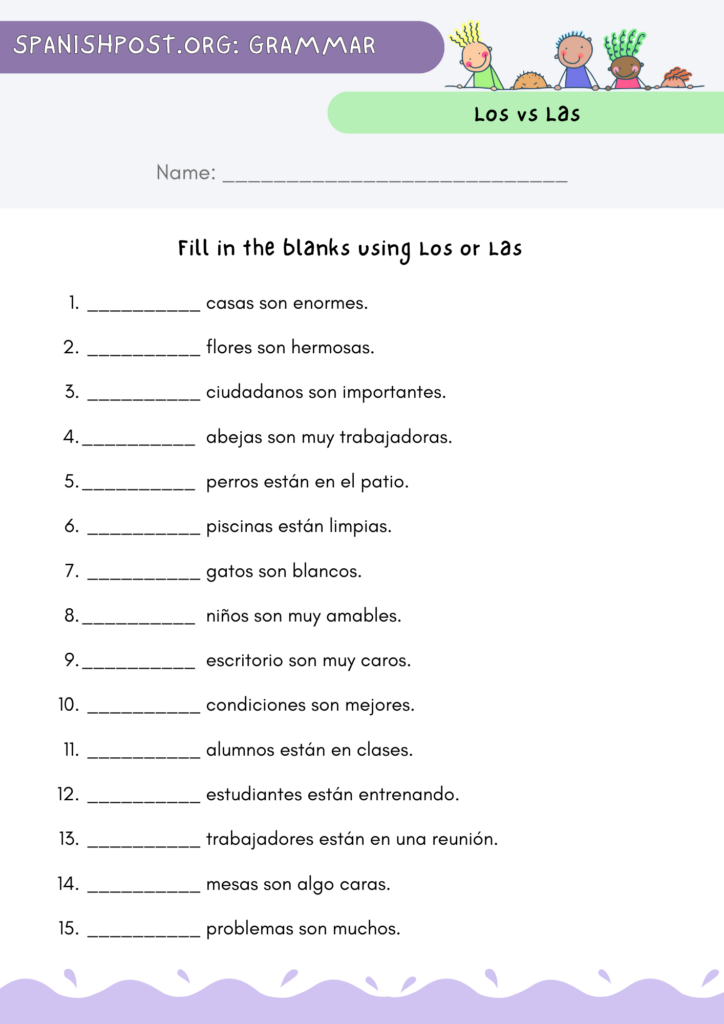In Spanish, the distinction between “los” and “las” is an essential aspect of the language’s grammatical structure.
These two words are articles, and play a crucial role in indicating the gender and number of nouns they modify.
These are some examples of sentences with “Los y Las”:
- Las aves son preciosas (The birds are beautiful)
- Los carros estan en la bodega (The cars are in the warehouse)
Understanding the difference between “los” and “las” is fundamental for anyone learning the Spanish language.
Table of Contents
Los, Las with Nouns in Spanish
Firstly, it’s important to note that Spanish nouns are gendered, meaning they are categorized as either masculine or feminine.
This gender distinction extends to the articles that accompany them.
“Los” is the masculine form, used with masculine nouns, while “las” is the feminine form, used with feminine nouns.
This gender assignment is not always based on the actual gender of the object or person but rather on grammatical conventions.
For example, “los libros” means “the books,” where “libros” (books) is a masculine noun, and “las mesas” means “the tables,” where “mesas” (tables) is a feminine noun.
Los, Las Based on Number
Furthermore, the use of “los” and “las” is not only based on gender but also on number.
Both articles indicate plural forms when referring to more than one item.
For example, “los niños” means “the boys,” where “niños” (boys) is a plural masculine noun, and “las chicas” means “the girls,” where “chicas” (girls) is a plural feminine noun.
Los y Las: Examples
These are examples that will help you learn when to use “las” o “los”
- Los deportes (The sports)
- Las películas (The movies)
- Los lugares (The places)
- Las experiencias (The experiences)
- Los problemas (The problems)
- Las soluciones (The solutions)
- Los conciertos (The concerts)
- Las canciones (The songs)
- Los colores (The colors)
- Las emociones (The emotions)
- Los ordenadores (The computers)
- Las pantallas (The screens)
- Los músicos (The musicians)
- Las artistas (The female artists)
- Los teléfonos (The phones)
- Las cartas (The letters)
- Los zapatos (The shoes)
- Las bufandas (The scarves)
- Los océanos (The oceans)
- Las montañas (The mountains)
- Los libros (The books)
- Las mesas (The tables)
- Los árboles (The trees)
- Las flores (The flowers)
- Los carros (The cars)
- Las bicicletas (The bicycles)
- Los amigos (The friends)
- Las amigas (The female friends)
- Los edificios (The buildings)
- Las ciudades (The cities)
Los vs Las: Worksheet
If you want to practice or help your students practice, download and print the following worksheet

Download a PDF version of the exercise here: Los vs Las Worksheet PDF

